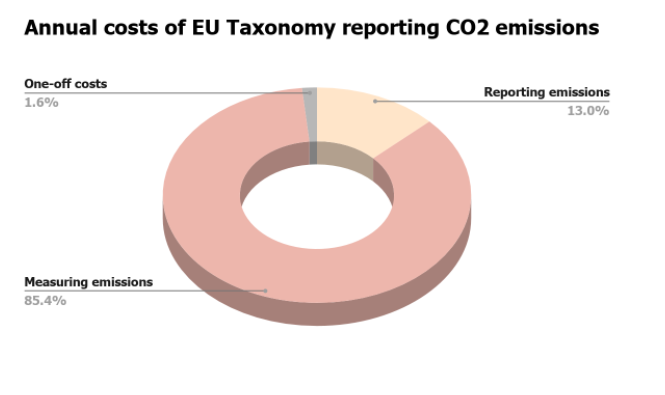Blockchain and its Importance in GHG Reporting

Greenhouse Gas emissions
Since October 29, 2009, all companies in the United States must report their annual Greenhouse Gas (GHG) emissions as mandated by the Environmental Protection Agency. In many countries GHG reporting is still optional, but regardless of whether or not you are obliged to report your GHG emissions, your attitude toward reporting can have a big impact on your bottom line. Those who do not report or are satisfied to only meet the minimum reporting requirements are getting left behind in this increasingly environmentally-conscious market. Transparency is becoming more important amid growing public concern about GHG emissions. GHG emissions are actively being monitored and discussed by governments, NGOs, and citizens.
You might be asking yourself,”Why would successful companies choose to hit more GHG emissions than they are required to?” GHG reporting is an opportunity for businesses to be transparent. Complete and accurate GHG emissions disclosures provide greater clarity to investors. This enables better decision making and helps to guide capital towards companies that are consciously addressing their impact on climate change. GHG reporting is an opportunity for businesses to be transparent. Complete and accurate GHG emissions disclosures provide greater clarity to investors. This enables better decision making and helps to guide capital towards companies that are consciously addressing their impact on climate change.
100 companies in the world have been responsible for 71% of the global GHG emissions that cause global warming since 1998, according to The Carbon Majors Database. Experts purport that investors who keep their stakes in companies reliant on fossil fuels, may end up accepting greater risk, as the energy sector continues to change. Apple, Facebook, Google, and Ikea are leading the way obtaining 100% of energy from a renewable origin. Companies that fail to adapt to the changing landscape are sure to be left behind—GHG reporting is a valuable first step in demonstrating a good faith effort to sustainability practices.
Monitoring and reporting on greenhouse gas emissions are important for several reasons—perhaps most notably for reducing our negative impact on the environment. But how does GHG emission reporting impact your business?
Depending on your city and state, you may be required to submit one or more emissions reports. For example, New York City requires GHG emissions reporting for city buildings, but New York State does not have any reporting obligations. Therefore, businesses must meet the reporting standards according to their operational locales. If you operate buildings across regions or states, this can get complicated.
For states and cities where reporting is not required, many businesses still push to release a report because it’s beneficial to the company as a whole. Making this information available to parties such as shareholders, customers, boards of directors and employees creates a sense of altruism—and that’s good for business.


The challenge for policymakers will be to decide how much to spend on measures to reduce greenhouse gas emissions. To do that, they must be able to compare the costs of various options, including renewable-energy sources and electric cars.
The challenge is taking on increasing urgency in the policy world as climate scientists argue that emission reductions must be rapid and deep, with a goal of reaching net zero by 2050. That goal, which many countries have already embraced, will require a vast transformation of the energy sources used to power the global economy, and it would mean going far beyond business-as-usual technological progress. Indeed, the US Energy Information Administration’s International Energy Outlook 2019 projects that fossil fuels will still generate 57 percent of electricity in 2050.
How much would it cost to move beyond business as usual and come within striking distance of net-zero emissions by 2050? To answer this question, it’s important to distinguish between short- and long-term costs.
In the short term, there are some inexpensive ways to reduce emissions, but deeper cuts run up against quickly rising costs. However, some activities—especially those involving fledgling blockchain technologies—that appear expensive in the short term may actually turn out to be low-cost approaches in the long term, because of induced innovation. This insight suggests that the longer-term cost of mitigation may be lower than is widely assumed.
For example, it is estimated that measuring emissions for the EU taxonomy would cost approximately $151 million for first time reporters. For companies having to report for the EU Battery Directive, they will have to report their material circularity and also their GHG impacts. Based on several similar reporting regimes, these companies will be spending something between $65,000 and $300,000 for these initial tracking, data gathering and measuring activities. Everledger estimates that it could be saving approximately more than 50% of these costs to ease the cost burden of measurement and reporting on GHG and product circularity allowing companies to refocus time, energy, finances and other resources on renewable energy infrastructure, system and production efficiencies, regeneration and carbon offset activities.
By incorporating GHG metric tracking and reporting capabilities through machine learning and blockchain applications, this project simplifies and saves money for costs of compliance which are normally complex and time consuming. Offering battery manufacturers a readily available easy to use digital tool to gather data and calculate their GHG impacts can help motivate more battery manufacturers to closely manage and account for recycling of their batteries.


